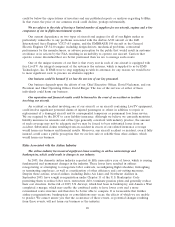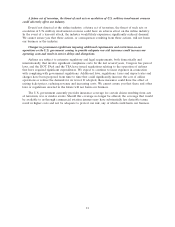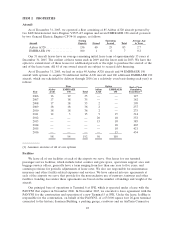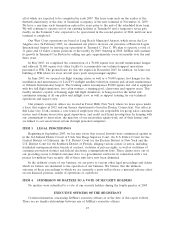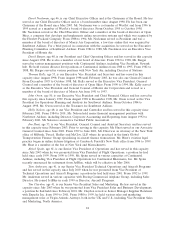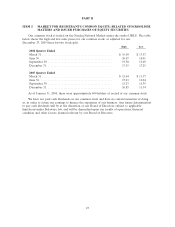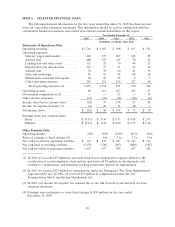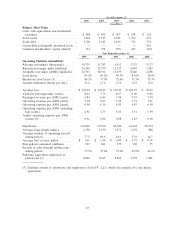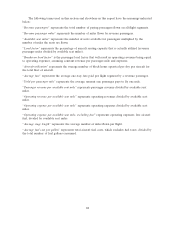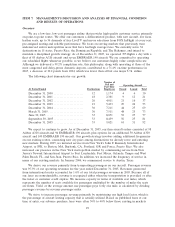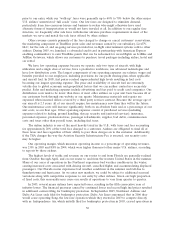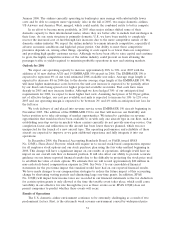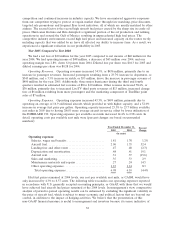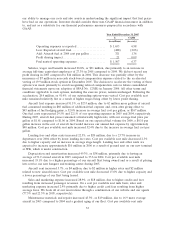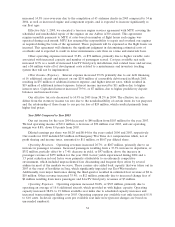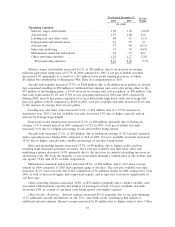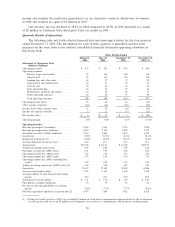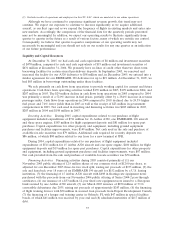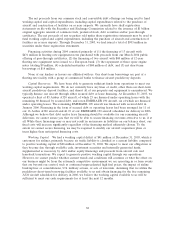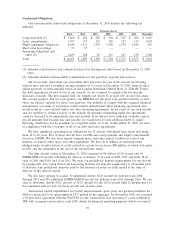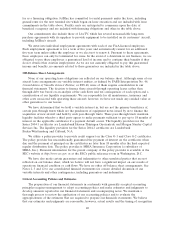JetBlue Airlines 2005 Annual Report Download - page 38
Download and view the complete annual report
Please find page 38 of the 2005 JetBlue Airlines annual report below. You can navigate through the pages in the report by either clicking on the pages listed below, or by using the keyword search tool below to find specific information within the annual report.prior to our entry, while our ‘‘walk-up’’ fares were generally up to 60%to 70%below the other major
U.S. airlines’ unrestricted ‘‘full coach’’ fares. Our low fares are designed to stimulate demand,
particularly from fare-conscious leisure and business travelers who might otherwise have used
alternate forms of transportation or would not have traveled at all. In addition to our regular fare
structure, we frequently offer sale fares with shorter advance purchase requirements in most of the
markets we serve and match the sale fares offered by other airlines.
Other revenue consists primarily of the fees charged to change or cancel customers’ reservations,
the marketing component of TrueBlue point sales and revenues earned by our subsidiary, LiveTV,
LLC, for the sale of, and on-going services provided for, in-flight entertainment systems sold to other
airlines. During 2005, we launched a cobranded credit card in partnership with American Express
enabling cardmembers to earn TrueBlue points that can be redeemed for award flights on JetBlue and
JetBlue Getaways, which allows our customers to purchase travel packages including airfare, hotel and
car rental.
We have low operating expenses because we operate only two types of aircraft, with high
utilization and a single class of service, have a productive workforce, use advanced technologies and
have low distribution costs. The largest components of our operating expenses are salaries, wages and
benefits provided to our employees, including provisions for our profit sharing plan, when applicable,
and aircraft fuel. In 2005, fuel prices reached unprecedented high levels resulting in fuel costs
becoming our largest operating expense. The price and availability of aircraft fuel are extremely
volatile due to global economic and geopolitical factors that we can neither control nor accurately
predict. Sales and marketing expenses include advertising and fees paid to credit card companies. Our
distribution costs tend to be lower than those of most other airlines on a per unit basis because all of
our customers book through our website or our agents. Maintenance materials and repairs are
expensed when incurred unless covered by a third party services contract. Because the average age of
our aircraft is 2.5 years, all of our aircraft require less maintenance now than they will in the future.
Our maintenance costs will increase significantly, both on an absolute basis and as a percentage of our
unit costs, as our fleet ages. Other operating expenses consist of purchased services (including
expenses related to fueling, ground handling, skycap, security and janitorial services), insurance,
personnel expenses, professional fees, passenger refreshments, supplies, bad debts, communication
costs and taxes other than payroll taxes, including fuel taxes.
The airline industry is one of the most heavily taxed in the U.S., with taxes and fees accounting
for approximately 20%of the total fare charged to a customer. Airlines are obligated to fund all of
these taxes and fees regardless of their ability to pass these charges on to the customer. Additionally,
if the TSA changes the way the Aviation Security Infrastructure Fee is assessed, our security costs
may be higher.
Our operating margin, which measures operating income as a percentage of operating revenues,
was 2.8%in 2005 and 8.8%in 2004, which were higher than most other major U.S. airlines, according
to reports by those airlines.
The highest levels of traffic and revenue on our routes to and from Florida are generally realized
from October through April, and on our routes to and from the western United States in the summer.
Many of our areas of operations in the Northeast experience bad weather conditions in the winter,
causing increased costs associated with deicing aircraft, cancelled flights and accommodating displaced
passengers. Our Florida routes experience bad weather conditions in the summer and fall due to
thunderstorms and hurricanes. As we enter new markets, we could be subject to additional seasonal
variations along with competitive responses to our entry by other airlines. Given our high proportion
of fixed costs, this seasonality may cause our results of operations to vary from quarter to quarter.
In 2005, several major airlines have reported losses, resulting in the fifth consecutive year of
industry losses. The financial pressures caused by continued losses and record high fuel prices resulted
in additional carriers filing for bankruptcy protection. In September 2005, Northwest Airlines and
Delta Air Lines each filed for bankruptcy protection. Delta Air Lines announced that in 2006 they
would cease operating Song, the low-fare operation which they started in 2003 to compete directly
with us. Independence Air, which initially filed for bankruptcy protection in 2005, ceased operations in
30


